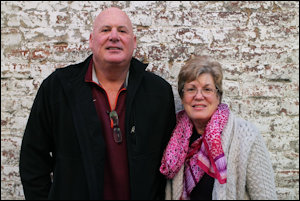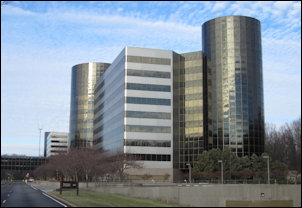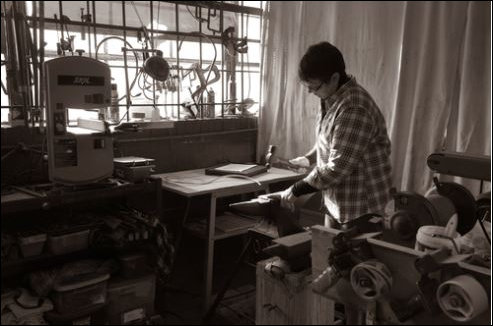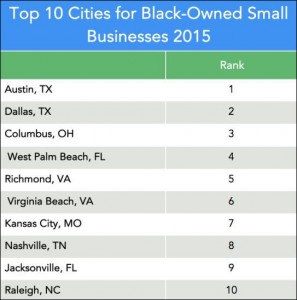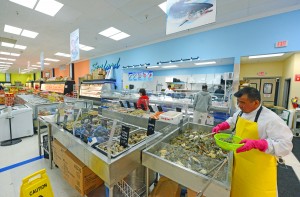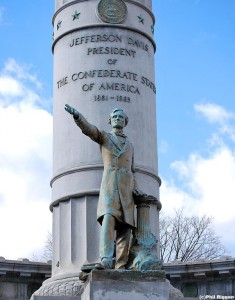
At the Diamond
By Peter Galuszka
Richmond is going through an existential crisis. Its “leadership” can’t get anything done after wasting the public’s time and attention on the supposed possibilities of this so-called “Capital of Creativity.”
Two examples come to mind. One is the city’s and region’s utter failure to do anything about its crumbling ballpark. The other is wasting everyone’s time on pushing an independent children’s hospital and then having VCU Health and Bon Secours pull the rug out from everyone.
Mind you, you hear ramblings out the wazoo about how Richmond is all about “regionalism” and how the “River City” is just a dandy place to live. One of the worst offenders is Bacon’s Rebellion, which shamelessly crams Richmond boosterism down readers’ throats.
But what really sets me off is a full page and unabashedly revisionist editorial in this morning’s Richmond Times-Dispatch titled “Ballpark in the Bottom? Definitely not.” The writers claim they “having listened carefully, and at great length, to all sides, we have become convinced a proposal that seemed promising at first is fatally flawed.”
Yipes! This comes after a couple years of the newspaper’s flacking Mayor Dwight C. Jones’ dubious plan to put a new $67 million stadium in historic Shockoe Bottom for the city’s Minor League AA team, the Flying Squirrels, rather than refurbishing or replacing the crumbling Diamond on the Boulevard near the strategic intersections of Interstates 64 and 95.
TD Publisher Thomas A. (TAS) Silvestri, the one-time and obviously conflicted chair of the local chamber of commerce, pushed the Shockoe idea because that was the flavor of the month with parts of the Richmond elite, including some developers, the Timmons engineering group, the Jones regime and others.
It was a bad idea from the start and had been shot down before. The Bottom has no parking and is too cramped. Even worse, it would disturb graves of slaves and other reminders of the city’s darker past such as being the nation’s No. 2 slave trading capital (this is before the “creativity” part).
The AAA Richmond Braves hated the Diamond so much that they bolted to a new stadium in Gwinnett County outside of Atlanta in 2009. A new team associated with the San Francisco Giants decided to move in. The Flying Squirrels have been an outstanding success and in the five years they have been here, their team has drawn more fans than any other in the Eastern League. In fact, their stats place them among the best draws in all of minor league baseball.
But the Squirrels had been led to believe they would get new or greatly improved digs. Instead of focusing on the Diamond (which has ONE elevator for the sick and elderly and it often doesn’t work). A couple of weeks ago, Lou DiBella wrote an open letter to the community noting that nothing has happened. Their deal with the city end next year, raising the issue of whether they will bolt as the Braves did.
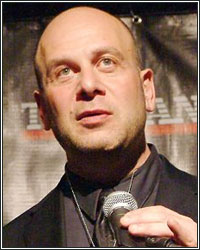
Squirrels owner DiBella
I did a Q&A with DiBella for Style. Here’s how he put it:
“We have been a great asset for the whole Richmond region. Where am I looking? I’m not trying to look. You want me to look, tell me. I want to create a dialogue. I want people to be honest and open and candid right now. If you’re going to screw around with us the same way you did with the Braves, the way Richmond did under false pretenses, and there’s no chance of any regional participation or the city being creative in building a stadium — let me know now because I do have to start thinking about the future.”
He has a point. Richmond did screw around with him. Chesterfield and Henrico Counties did, too. The Squirrels get most of their spectators from the suburbs but their political leaders don’t want to spend anything to help. They neatly got off the hook when they conveyed the Diamond from the Richmond Metropolitan Authority, of which they are members, to the city exclusively.
The Jones administration, meanwhile, wasted everyone’s time (except that of the Richmond Times-Dispatch) by pushing the Bottom idea. The business elite sponsored trips for so-called local leaders to fly around the country and look at other stadiums.
Then, nothing. A development firm called the Rebkee Co. came up with a plan to build a new stadium near the Diamond with private funds. But the city refused to even review the plan. They did not accept formal written copies of the idea.
The Jones team did manage to come up with a summer practice area for the Washington Redskins that is used about two or three weeks a year. It hardly draws anything close to what the Squirrels do, but they had little problem pushing with their idea.
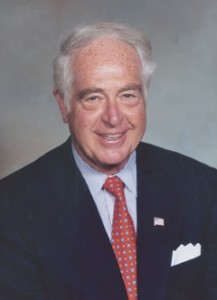
Bill Goodwin
Next up is a stand-alone children’s hospital, an idea backed by a group of pediatricians and Bill Goodwin, a wealthy philanthropist and one of the most powerful men in Richmond. He and his wife pledged $150 million for the project and many, including the RTD, talked about it to death. Goodwin’s idea would be to create a world class hospital on the level of the famous Childrens Hospital of Philadelphia.
Then, without warning, non-profits VCU and Bon Secours health system pulled the rug out from under Goodwin and everyone else. They said an independent children’s hospital wasn’t needed, there was no market for it and pediatric care is moving more towards out-patient service, anyway.
The real reason, says Goodwin, is that a stand-alone children’s hospital would mean that other local hospitals would have to scale back their money-making pediatric units.
Also for Style, I asked Goodwin for his thoughts. He was flabbergasted at shutting down the idea without warning. He said:
“We were planning for an independent children’s hospital that was regional and would provide more comprehensive coverage than what VCU and Bon Secours are currently providing. This effort would have been a heck of an economic driver for our community and would provide significantly better medical care for children. Better medical education and research were also planned. We would be creating something that was creating good jobs, and it would be something that the community would be proud of, which we haven’t had recently.”
So there you have it, sports fans – a moment of truth. With its current leadership, Richmond couldn’t strike water if it fell out of a boat. You know it when the editorial writers on Franklin Street start revising history.
